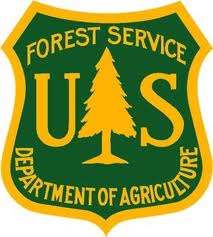
USDA Forest Service Rocky Mountain Region will receive approximately $85 million to recover and restore national forests, watersheds, and communities impacted by 2020 and 2021 wildfires.
The funding is a share of the $1.36 Billion of supplemental appropriations provided to the Forest Service through the Extending Government Funding and Delivering Emergency Assistance Act of 2021. The act provided a total of $28.6 billion in new supplemental appropriations for disaster relief recovery to federal agencies.
Approximately $85 million in disaster funding will be allocated to national forests and grasslands in Colorado, Kansas, Nebraska, South Dakota, and Wyoming, with the majority going to Colorado and Wyoming. Funds will be used to repair infrastructure and natural resources damaged by the 2020 and 2021 Grizzly Creek, Sylvan, Cameron Peak, East Troublesome, Calwood, Williams Fork, Mullen, and Middle Fork wildfires on the Arapaho, Roosevelt, Medicine-Bow, Routt, and White River National Forests in Colorado and Wyoming. National forests and grasslands in Nebraska, Kansas, and South Dakota will receive funding for disaster recovery research.
Of the $85 million:
-
- $34 million will be allocated to capital improvement and maintenance projects, including repairing roads, recreation facilities, and trails damaged by wildfires.
- $48 million will be allocated to projects on national forests, including post-fire recovery activities such as range improvements, revegetation, and watershed restoration.
- $2 million will be allocated to state and private forestry programs to support partners in restoring private lands affected by wildfires.
- $1 million will be allocated to research and development activities, such as disaster recovery research and the Forest Inventory and Analysis Program, the nation’s forest census, to complete delayed data collection and program delivery work because of wildfires and the pandemic.
“We are committed to continuing the post-wildfire recovery and restoration work that has been ongoing since before the wildfires were suppressed,” said Frank Beum, Regional Forester of the Rocky Mountain Region. “Our disaster recovery and restoration work connect to the agency’s recently released 10-year wildfire crisis strategy and other efforts to build on existing relationships and create new partnerships to place fuels and forest health treatments in the right places and at the right pace and scale.”
There are three phases of recovery following wildfires on public lands: fire suppression repair, emergency stabilization-Burned Area Emergency Response (BAER), and long-term recovery and restoration. Fire suppression repair is a series of immediate post-fire actions taken to repair damages and minimize potential soil erosion and impacts resulting from fire suppression activities. BAER is a rapid assessment of burned watersheds by a BAER team to identify imminent post-wildfire threats to human life and safety, property, and critical natural or cultural resources on National Forest System lands and immediate actions that follow to implement emergency stabilization measures before the fire area receives moisture. Long-term recovery and restoration utilize non-emergency actions to improve fire-damaged lands that are unlikely to recover naturally.
The 10-year wildfire crisis strategy, called “Confronting the Wildfire Crisis: A New Strategy for Protecting Communities and Improving Resilience in America’s Forests,” combines a historic investment of Congressional funding with years of scientific research and planning into a national effort that will dramatically increase the scale of forest health treatments over the next decade.
The Forest Service is a federal agency within the U.S. Department of Agriculture that cares for 193 million acres of working lands that provide an array of public benefits. The Rocky Mountain Region encompasses over 22 million acres of national forests and grasslands across Colorado, Kansas, Nebraska, South Dakota, and Wyoming. The mission of the USDA Forest Service is to sustain the health, diversity, and productivity of the nation’s forests and grasslands to meet the needs of present and future generations. Visit www.fs.usda.gov/main/r2/home to learn more.
Support Northern Colorado Journalism
Show your support for North Forty News by helping us produce more content. It's a kind and simple gesture that will help us continue to bring more content to you.
BONUS - Donors get a link in their receipt to sign up for our once-per-week instant text messaging alert. Get your e-copy of North Forty News the moment it is released!
Click to Donate
